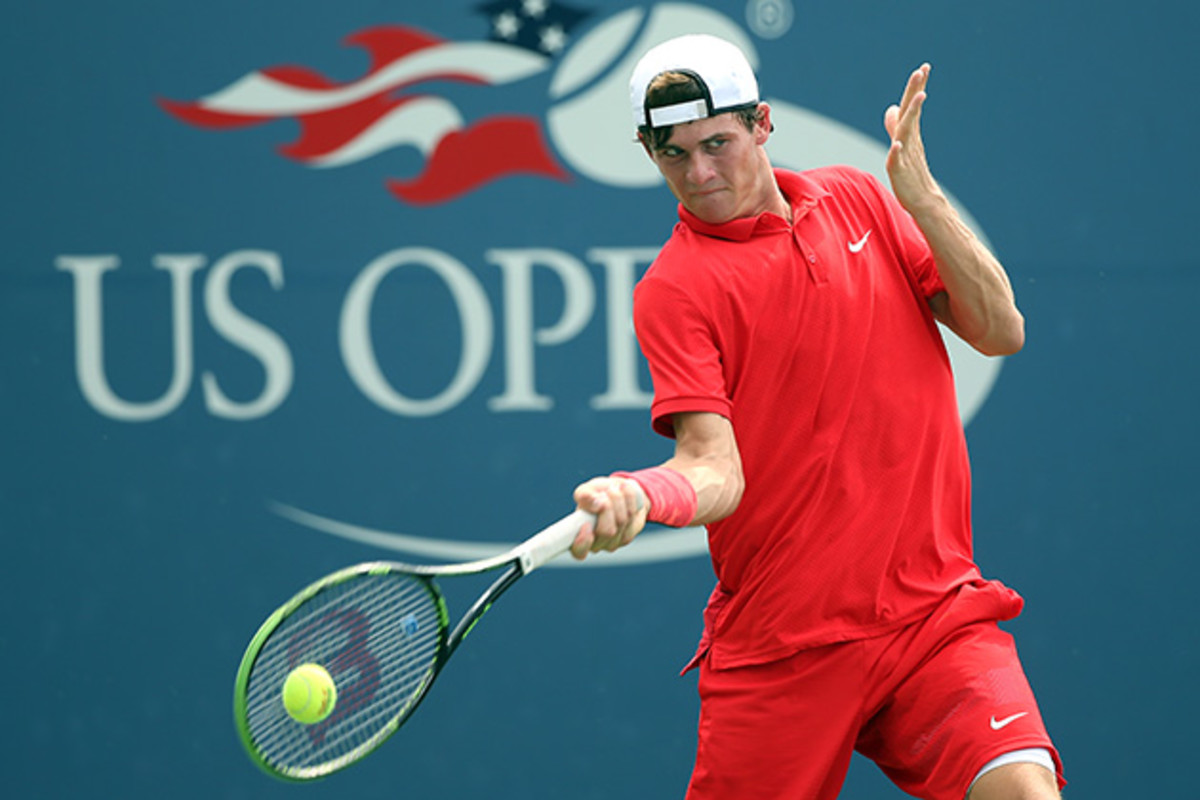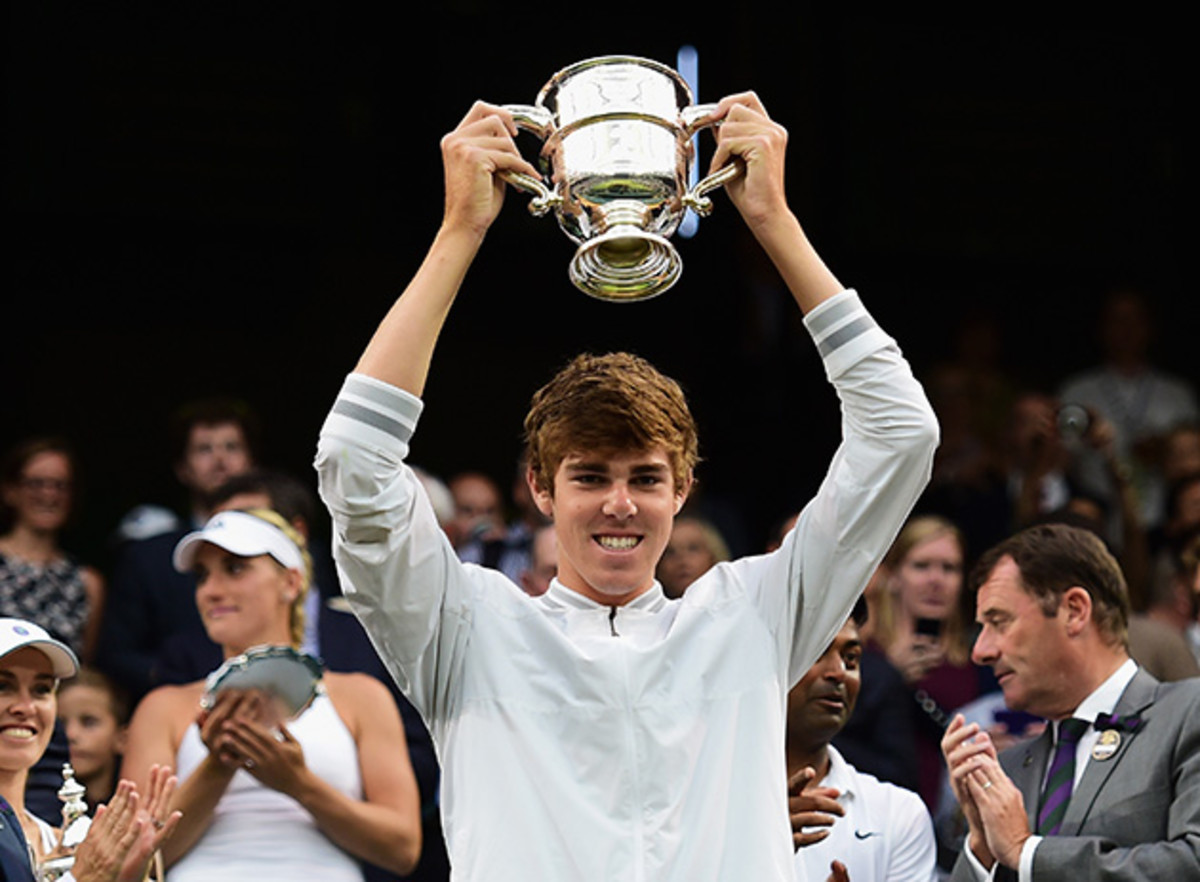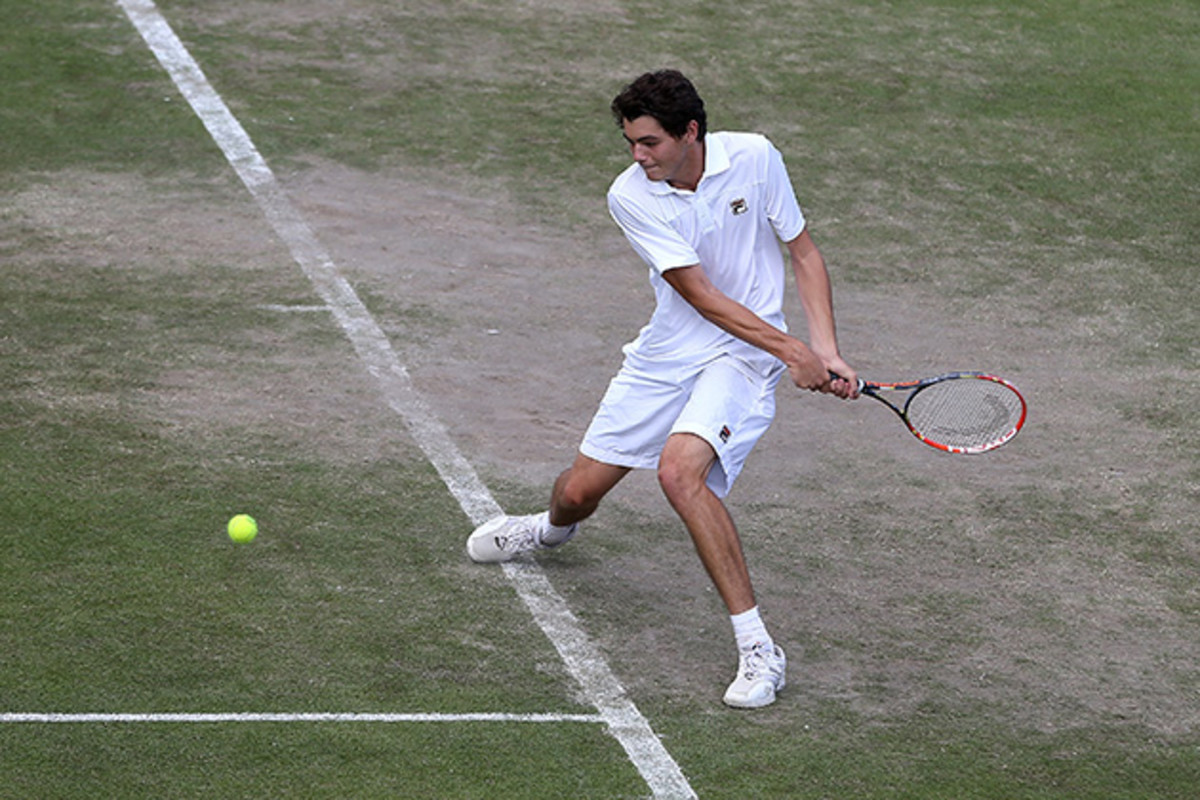American juniors Paul, Fritz, Opelka dismiss 'next big thing' label

A lot has changed since Sept. 2003. Herm Edwards was the coach of the New York Jets and Steve Spurrier was the coach of the Redskins. Jeepers Creepers 2 and Dickie Roberts: Former Child Star spent time as the number one movie in America.
Sept. 2003 was also when Andy Roddick won the 2003 U.S. Open, the first and only Grand Slam title of his 10-plus-year career. That win, in three sets over Juan Carlos Ferrero, was the last by an American man in a Grand Slam final. What has followed is an uncharacteristic drought in men’s tennis for a country that has produced the likes of John McEnroe, Jimmy Connors, Pete Sampras and Andre Agassi and has 51 championships—more than double the country with the second-most (Sweden, with 25).
The future of American men’s tennis has since been placed on the rackets of several young players over the past decade, from Sam Querrey to Donald Young to Jack Sock. But this year, after three different Americans—Tommy Paul, Reilly Opelka and Taylor Fritz—won the last three junior Grand Slams, the American hype train may be moving faster than ever.
The trio’s recent success has propelled them into the national spotlight together. But their relationship, and their friendship, extends back several years. Not only do few top players play high school tennis, many of them don’t even go to high school at all, and opt to instead enroll in online school. Such was the case for Paul and Opelka, who both spent their high school years traveling the country playing tournaments or training in Boca Raton, Fla., at the USTA facilities. It was there that Paul and Opelka began training together.

“We lived together at the dorms at USTA for three years, and then we’re on the road together playing the same tournaments, probably 30 weeks out of the year,” Opelka, 18, says. “I’m with Tommy and my coach Diego [Moyano] more than I’m with my family.”
“Me and Reilly hang out pretty much every day that we practice together," says Paul. "Taylor, whenever he comes down, we love hanging out with him, he’s fun, but he’s not really in Boca as much. We’re all pretty close.”
The years of training and traveling together have made Paul and Opelka close friends. When they’re not on the tennis court, they’re playing basketball, going fishing and spending Sundays watching football. (Opelka, who’s extended family hails from Chicago, is a Bears fan, while Paul, who was born just outside of Philadelphia, is an Eagles fan.)
A native of Rancho Santa Fe, Calif., Fritz took a slightly different road to the pros. He attended his freshman year of high school, played a number of other sports and didn’t decide to pursue tennis as a full-time endeavor until he took a trip down to USTA later that year. Although he is the son of two professional tennis players—his mother, Kathy May, reached the quarterfinals of three Grand Slam tournaments in the late 1970s and his father, Guy, is also a former pro who coaches other players, including American CoCo Vandeweghe—he didn’t start training seriously until much later than Paul and Opelka.

“I was playing a lot of other sports, and didn’t play a lot of tennis, really,” says, Fritz, 18. “When I got to Florida to train, I realized how much better everyone else was. I really wasn’t as good as I thought I was, and it took that to make me drop everything and start training really hard.”
“He was pretty far behind us and he had no experience on clay,” Paul says. “But then he really worked hard and started to take off. He’s playing so much better now—he’s playing some really good tennis.”
“Really good tennis” might be a bit of an understatement for Fritz, who has been sizzling since the 2015 U.S. Open. After claiming the boys’ junior title in New York, he won two straight ATP Challenger tournaments and climbed to No. 207 in the ATP rankings. Perhaps more impressive, he beat 30-year-old Dustin Brown twice in October, a player who has a career winning record against Rafael Nadal. Take as much stock as you’d like in the transitive property, but the results are surely impressive.
Paul, a native of Greenville, N.C., was the first of the group to walk away with a juniors Grand Slam title, at the 2015 French Open. At Wimbledon, 6’11’’ Opelka used his booming serve to win a wild 15–13 second-set tiebreaker over Fritz to secure his spot in the finals, where he beat Sweden’s Mikael Ymer in straights. (He also cracked 141 mph on his serve at the U.S. Open a few weeks later, the second fastest serve recorded at the tournament overall.) A third star emerged in New York as Fritz topped Paul to win the U.S. Open juniors title, marking the first time in history that three different American men had won Grand Slams in a calendar year—juniors and main draw included. Three stars had been born.
All three have all officially gone pro, a designation that, in the tennis world, means players can sign contracts right away but must forgo college eligibility. They each considered college as a possibility—Paul had a verbal commitment at the University of Georgia, while Fritz had one at USC. But collegiate tennis is a rarity for highly touted players, and once the agencies and clothing companies started knocking on their doors, the decision was clear.
“I thought, wow, it’s really a possibility I can do this,” Paul says of the attention he received after the French Open. “It had always been a dream of mine to play high-level pro tennis, and once I started to get that attention, I decided going pro was the best way to go about it.”

“The money was there, so I didn’t see a reason to pass that up and go to college,” says Fritz. “It was my dream, it was what I always wanted, so why not go and pursue it? Looking back, I really think I made the right decision.”
Paul withdrew his commitment to Georgia and signed with Team8, Roger Federer’s new agency that lists Grigor Dimitrov and Juan Martin Del Potro on their client sheet. Opelka signed with Lagardere Sports, while Fritz landed a contract at Creative Artists Agency.
These young men haven’t been the first bona fide stars to come out of the juniors over the past decade. But while some of the previous youngsters have had success at the highest level, none have gotten close matching Roddick’s '03 Grand Slam title. Paul, Opelka and Fritz each have massive potential to become the “next big thing” in American tennis, but it’s not something that these 18-year-olds like to think (or talk) about.
They’ve all heard it a million times before.
“We get that question a lot in the media, whether or not we feel pressure because of the drought, but I don’t feel any pressure,” Opelka says. “It’s going to take us some time. All of us. The average age in the Top 100 is around 28 years old now, players are so physically fit and so strong, and you need a lot of experience to get to the top level and be consistent.”
“I’m not playing tennis so I can help the U.S. out of the big Grand Slam drought,” Fritz says. “I’m not playing it for any reason other than myself.”
